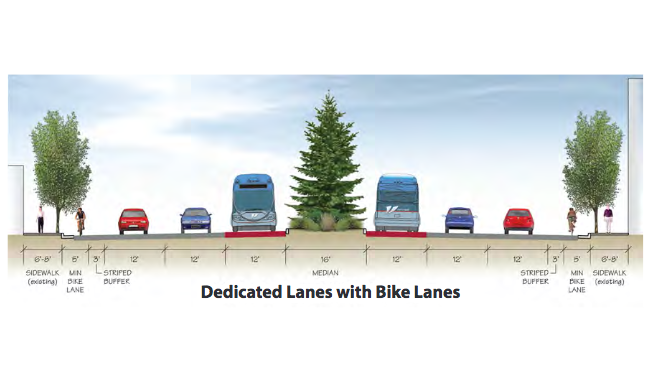
BY ALLISON LEVITSKY
Daily Post Staff Writer
VTA’s unpopular plan to block off two lanes of traffic on El Camino Real for dedicated bus service between Palo Alto and Santa Clara has been scrapped after more than three years and $10.5 million worth of work, a VTA spokeswoman said yesterday.
“This is one of the busiest corridors in our transit network,” spokeswoman Brandi Childress said, citing bus lines 22 and 522, which travel on El Camino between the Palo Alto and Eastridge transit centers. “At the end of the day, we’re still trying to attract people out of their cars.”
The plan raised eyebrows among motorists skeptical of VTA’s promise that removing one lane in each direction on the major thoroughfare would have little effect on traffic. In 2013, a VTA study showed that 12,512 riders took route 522 every day, and that the trip took more than 85 minutes.
Dedicating lanes to buses would have reduced that commute to less than 44 minutes, but would have cost $233 million to implement.
The project would have required buy-in, including commitment to enforce the new restrictions on traffic in the bus-only lanes, from the five cities the Bus Rapid Transit lanes would have traveled through on El Camino.
But it proved largely unpopular among all the cities involved. One of the major objections is that the elimination of two lanes from El Camino would send traffic into nearby neighborhoods.
Los Altos Councilwoman Jeannie Bruins, who chaired the El Camino Real Rapid Transit Policy Advisory Board, presented the project in City Council study sessions in Los Altos and Sunnyvale last month, but failed to win the hearts of other city decision-makers.
“The presentation and discussion to do this pilot project was not well received,” Childress said. The project’s advisory board then recommended that the agency not pursue the program or move on to the design and engineering phase of the project.
Mountain View Mayor Lenny Siegel, Palo Alto Councilman Cory Wolbach and Santa Clara County Board of Supervisors President Joe Simitian, of Palo Alto, also served on the advisory board.
Mountain View council members Pat Showalter and Ken Rosenberg voted for the program in 2015, despite that they had promised in the 2014 campaign to oppose the lanes.
The board considered introducing a carpool lane for high-occupancy vehicles, buses and motorcycles, Childress said.
“The point of trying to implement a transit improvement in this corridor is because of the growth that’s going to be happening,” Childress said, referring to Silicon Valley job growth and the population boom expected from thousands of new apartments in Mountain View and elsewhere.
VTA is still working to improve bus shelters along the El Camino corridor and work with the cities to install traffic signals that show buses fewer red lights, Childress said.



